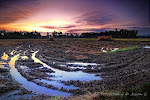I have successfully brew the CO2 since many months ago, and sharing my recipe in here.

The sequence & volume uses:
I am using two numbers of 1 litre bottle(1000ml) (as shown in photo below).
Ready 250ml (g) of sugar, fill it in the container.
Pour in 500ml of tap water, and 250ml of boiling water (ratio 2:1).
Do not shake the bottle, let the sugar sink to the bottom with lukewarm water.
And now, put in 2.5ml (1/2 teaspoon) of yeast.
Lastly, put in 5ml (1 teaspoon) of Soda bicarbonate.
Quickly seal the cover to prevent any bacteria get in the bottle.
Put it in a corner for about an hour to let the yeast fully active.
There is evidence that yeast mixtures last longer if you decrease the amount of yeast, and conversely last shorter periods if more yeast is used. Lower yeast also means less CO2 produced per minute, but produce more consistantly over time. Higher yeast levels will cause an initial higher burst of CO2 production with a gradually declining production over time. Keep this in mind while experimenting.

DIY a 1 litre 'milk' bottle is simple, punch a hole and put in a connector and air tube on top the cover and sealed the cover with hot glue gun after mixing yeast, soda and sugar. While this is probably the best method available, it can be cost prohibitive. A nice compromise is the DIY CO2 system. nowadays need to mix in between 9~12 days, and using 2 bottles to push out more bubbles to get 25~35ppm.

DIY a simple plastic container with drilling 2 holes on top the cover and put on the hose connector and air tube, sealed it with the hot glue gun. Then, that is a bubble counter. Later fill in some water to let the bubble out from the tube for counting.

Bought the CO2 reactor on 2006. It works good, diffuse Co2 in water achieve near to perfect. I like it! Even better then the conservative type. And the surface skimmer works good too, no more oil slick on the water surface.



 The sequence & volume uses:
The sequence & volume uses: 









 These photos are my early stage 2006-2007 setup of the planted tank, without any experience in the beginning, know nothing about plants, and the worst is the aquascape skill really like a crap.
These photos are my early stage 2006-2007 setup of the planted tank, without any experience in the beginning, know nothing about plants, and the worst is the aquascape skill really like a crap.  Keeping a healthy planted aquarium and a good biological system isn't that easy and need to spend lots of efford & time to take care
Keeping a healthy planted aquarium and a good biological system isn't that easy and need to spend lots of efford & time to take care  During setup the new aquarium, the bacteria in the filter system
During setup the new aquarium, the bacteria in the filter system  Of course it would be best to start with all your favorite plans provided you have the available quantity to begin with. If it is of
Of course it would be best to start with all your favorite plans provided you have the available quantity to begin with. If it is of  Different types of aquascape call for different strategies in cultivation of aquatic plants. For instance, if you plan to use Cryptocoryne as the focus of your layout, most of the leaves will melt away as it tries to acclimatize to its new enviroment, lending it a desloate look to the aquarium until new buds start to develop again. In this case, you will have to consider the beauty of the aquarium as well as faster growing starter stem plants that require stronger lighting. After a period of time, the stem plants growth will begin to show a decline, which is relative to the decrease in lighting intensity and other factors such as acidity and water hardness. Under such conditions, it would then be ideal and practical to introduce Cryptocoryne since they do better in mature tanks
Different types of aquascape call for different strategies in cultivation of aquatic plants. For instance, if you plan to use Cryptocoryne as the focus of your layout, most of the leaves will melt away as it tries to acclimatize to its new enviroment, lending it a desloate look to the aquarium until new buds start to develop again. In this case, you will have to consider the beauty of the aquarium as well as faster growing starter stem plants that require stronger lighting. After a period of time, the stem plants growth will begin to show a decline, which is relative to the decrease in lighting intensity and other factors such as acidity and water hardness. Under such conditions, it would then be ideal and practical to introduce Cryptocoryne since they do better in mature tanks 
